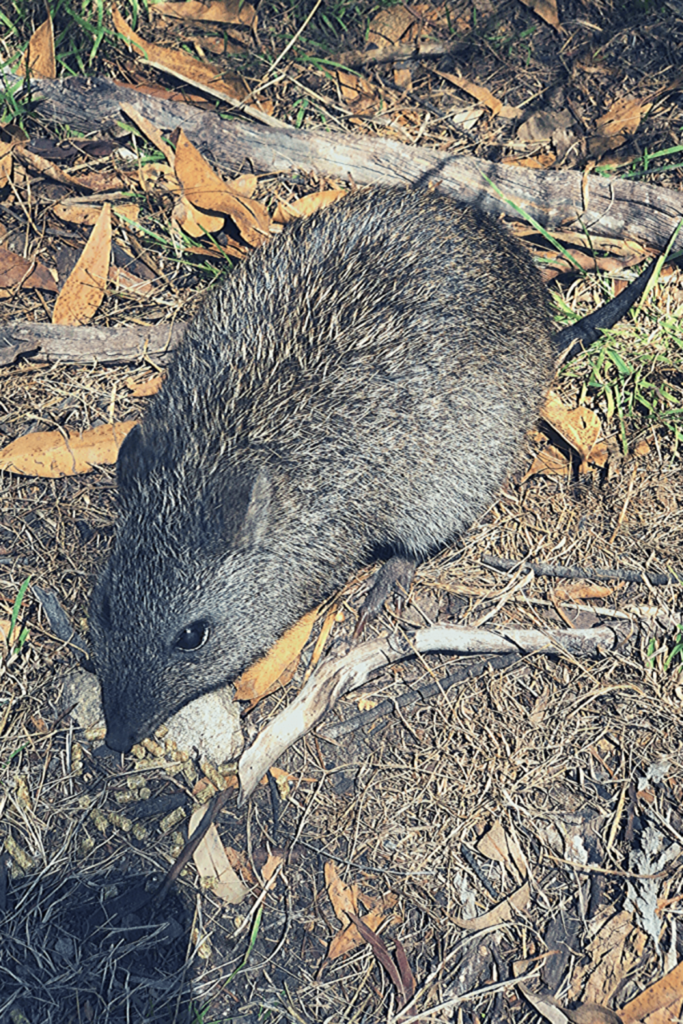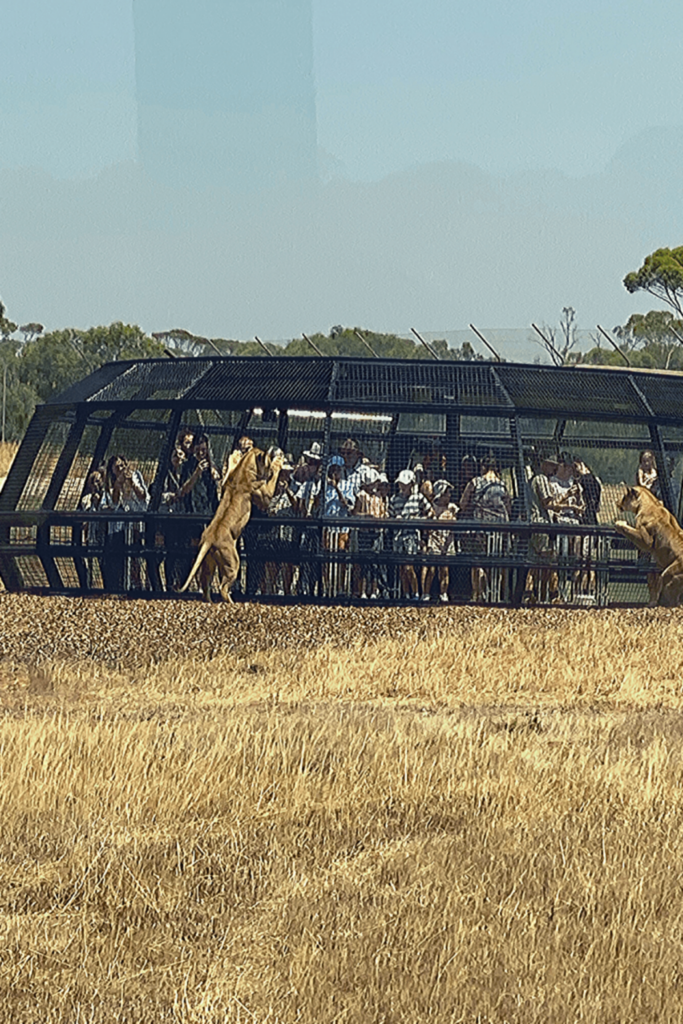Adelaide is blessed. There are numerous zoos and wildlife parks in and near Adelaide. This is, of course, great if you are visiting with kids or just want to see some of the local wildlife. But which zoos and wildlife parks should you visit and what is there to see at each one?
Adelaide is blessed. There are numerous zoos and wildlife parks in and near Adelaide. This is, of course, great if you are visiting with kids or just want to see some of the local wildlife. But which zoos and wildlife parks should you visit and what is there to see at each one?
We do like a good zoo (such as Burgers Zoo or Hellabrunn) so it should come as no surprise that we also go to at least one zoo or wildlife park each time we are visiting family near Adelaide. For simplicity, we’ll only look at the four biggest and most famous zoos and wildlife parks in and near Adelaide.
Adelaide Zoo
Our Adelaide post already suggested a visit to the Adelaide Zoo, so you may already have this suggestion on your radar. It is the only zoo of the four within the Adelaide CBD.
The Zoo is the second oldest zoo in Australia and is home to more than 250 species of animals (yes, it is not as big as Berlin). These include a number of endangered species (such as tree kangaroos, hyacinth macaws and pygmy hippos), as well as Australia’s only pandas, Wang Wang and Fu Ni.
The zoo also has a number of Australian animals, such as Australian sea lions, little penguins, ringtail possums, Tammar wallabies and echidnas. If you are lucky, the quokkas in the petting zoo may even get close enough to pat.

While Miss M loves animals, her real love is dinosaurs. For the second time (that I know of), lifesized dinosaurs were ‘hidden’ around the zoo during the last school holidays. Our little dinosaur aficionado was in awe. The dinosaurs were more realistic than the ones in Italy, too.
The Zoo also has a great nature-inspired playground suitable for all abilities. It includes climbing structures, water play features, a creek and aerial walkways. Miss M wanted to spend hours here, even when she was sick with the flu (no, it wasn’t Coronavirus).
Tickets cost $20 for children (aged 4 to 14), $37 for adults and $26.50 for concession (incl. students) upon presentation of a valid photo id. The zoo also has family passes with two adults and up to 5 children (how many places allow or families that large?).
The zoo also sells a 2-park pass which includes the Adelaide Zoo and Monarto Safari Park (see below).
Cleland Wildlife Park
Cleland Wildlife Park is one of the best zoos and wildlife parks in and near Adelaide and in all of Australia. It is a favourite of tourists and locals alike.

Cleland is one of the few parks where you can hold and pat koalas, and feed kangaroos, wallabies, emus, bettongs and potoroos. We have visited with adults, teenagers, toddlers and school children and it is always a hit. Every visit brings something special.
We have a family tradition of visiting a zoo on Christmas Eve to find out how the animals will be celebrating Christmas. Last year, we went to Cleland. Miss M even got to feed a joey while in its mother’s pouch! Normally the mother will hop away to protect her youngling.

You can buy feed bags for $3 a bag and a little tends to go a long way. Koala holds, reptile holds and wombat experiences (with photos) cost extra but are well worth it. Check the program for keeper talks and feeding times.

There is a café with drinks, ice creams and a limited food selection. To save money (or if you have picky little eaters in tow), bring your lunch and enjoy it at one of the many benches and tables. The gift shop has various Australian animal-themed gifts and one of the best collections of Australian animal stuffed toys. Miss M now has I think 12 of the animals, purchased primarily in the gift shop.

Entry costs $30 for adults, $15 for children (aged 4 to 15) and $74 for a family of four. Additional costs apply for experiences. Some of these are paid for upfront (e.g. wombat experience), while others are paid at the time (e.g. koala experience or reptile holds).
Buses run regularly from Adelaide city centre and take about one hour to get to the park. Of course, you can also drive: it takes 20 minutes from the Adelaide city centre and parking is free.
Tip: Check the weather the night before your planned visit. If it is forecast to be above 32°c at Mt Barker, the koala holds and pats and wombat experience will be closed because it is too hot for the animals.
Warrawong Wildlife Sanctuary
Warrawong Wildlife Sanctuary is another Adelaide institution and it is one of the zoos and wildlife parks in and near Adelaide that is definitely worth considering.
Dr John Wamsley started Warrawong in 1969, constructing fences to protect the native animals from feral cats and foxes and create a sanctuary for them. The Sanctuary was closed for a number of years (there were problems getting insurance for the site), before being purchased recently by a couple who are trying to restore it to its former glory. We wish them luck.
Along with various hopping mice, potoroos, bandicoots and kangaroos, and an abundance of birdlife, Warrawong has a secret weapon: it is the only place in South Australia you can see and learn about the unique platypus, thought to be extinct in the state. Part of the park includes a large lake with breeding burrows, which have been successfully used in the past. The new owners are hoping to get this program back up and running soon.
Many of the animals at the sanctuary are nocturnal. One of the best times to see them is sunset. While they are expensive, the tailored sunset tours are fantastic if you have a small group. Our sunset tour was one of our favourite memories of the sanctuary. We had friends visiting from the USA who were even lucky enough to see an elusive platypus during their visit.

Warrawong is a 25-minute drive from Adelaide in the Adelaide Hills. Unfortunately, it is a little more difficult to reach via public transport, but it is still doable. You need to catch the bus from Adelaide to Stirling, then the 865 bus from Stirling to Mylor. Get off at stop 39 and it’s a 22-minute walk to the Sanctuary.
Tickets currently cost $8 for children and $12 for adults.
Tours or feeding experiences cost significantly more, but are definitely worth it. Tickets, tours and junior keeper experiences can be booked online.
Monarto Safari Park
Monarto is one of our favourite zoos and it has been the last place we’ve visited on a number of our trips to Australia.

The zoo was established in 1983 as a purpose breeding facility, especially for endangered species. At this stage, it was not open to the public. This changed 10 years later, when it was developed into an educational facility with bus and walking tours and five major habitat exhibits (Asian steppes, arid North Africa, African plains and Asian grasslands). For the most part, the zoo has a carbon-neutral footprint: it is not irrigated and uses native flora to prevent erosion, wastewater is recycled, local materials are used in construction and solar power is used for the electric fencing.
It is now the largest open-range zoo in the world. It has more than 1,500 hectares of land and is home to more than 500 animals and 50 species, many of which are endangered (such as the yellow-footed rock wallaby, scimitar oryx, Przewalski’s horse, Barbary sheep, rhinoceros and South African cheetahs). Monarto also has the most successful giraffe breeding program in Australia and has welcomed 48 calves.

There are five different ways to see the animals:
- Some animals can be reached on foot and visited at any time. These include the wallabies, meerkats and chimpanzees.
- Most of the park is open safari, with special gates to keep certain animals separated. You can only enter these areas by bus: the first stop is next to the visitor’s centre and café. Buses are staffed by volunteers who share their knowledge of the park and its animals. I have learnt something new every trip.
- At some bus stops, you can disembark to see some of the animals up close. Most of these areas have special feeding times and keeper talks. These include the rhinoceros, giraffes and hyaenas /wild dogs.
- The animal experiences, which involve feeding or patting various animals (e.g. giraffes, cheetahs, rhinoceros or meerkats). The absolute highlight is the Lions 360 experience. Here, the visitors are placed in a cage and the lions are encouraged to come visit. They will lean up against the cage to be fed and can even jump on top to view the visitors from above. All animal experiences cost extra and many are not available for children under 8 years old.
- Some animals are still wild! On our most recent trip, an emu (male) and two chicks were wandering around near the waterhole and the café.

Particularly during school holidays: get there early as the buses fill up quickly.
Monarto is 70 km from Adelaide. For many years, you could only reach it via car. However, there is now an early morning LinkSA service between Adelaide (Curry Street) and the park, returning around 4 p.m.
Tickets cost the same as they do at the Adelaide Zoo.

Some exciting news (well at least we think it is exciting): the Park just green-lighted some major changes. A new visitor centre will be built (Opening February 2022), and they will be launching new tours, too, including safari experiences in open-sided vehicles. From 2022, it will also be possible to stay at the Park! A new $40 million accommodation development with conference, resort and ‘glamping’ facilities will allow guests to sit under the stars and enjoy the call of the wild.
Bonus tip: Dolphin Sanctuary
I’d love to visit the Dolphin Sanctuary Kayak Tours at Garden Island (Port Adelaide). I have it on good authority that the tours are great, but Miss M is not yet old enough.
Take a guided ($72 per adult) or unguided kayak tour (from $50 per adult) through a 10,000-year-old mangrove forest and see approximately 30 resident and 300 transient dolphins playing, feeding and nursing. There are numerous wildlife and shipwreck sighting opportunities, o bring a camera.
While you don’t need any kayaking experience, reasonable fitness levels are recommended. Children must be at least 9 to go (sorry Miss M!) and need to be 13 or older to have their own kayak.

Zoos and wildlife parks in and near Adelaide
There are other zoos and wildlife parks in and near Adelaide – well at least more wildlife parks ‘near’ Adelaide – but these are our favourite four. They are all great for animal lovers, but are particularly good if you wish to get up close to some of our native animals, or perhaps a lion or rhinoceros.
Article originally posted on: https://www.teawithmum.com/zoos-and-wildlife-parks-in-and-near-adelaide/






